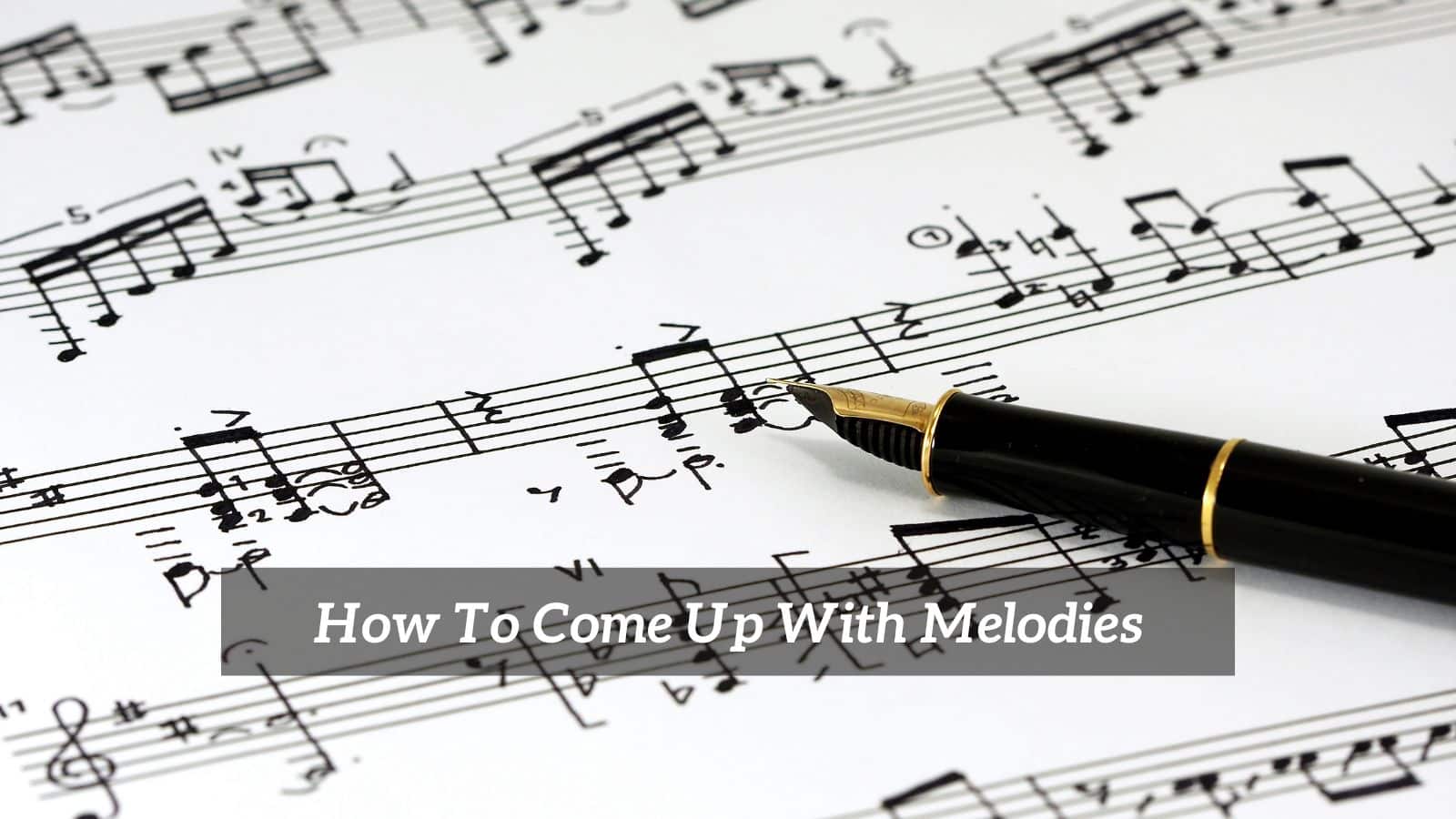
Everything around us has a melody—if we will listen. Think about the birds singing outside or a wind chime playing in the wind, even the motif you hear before an announcement is made over an intercom system. Melodies are everywhere.
What Is a Melody?
A melody comprises three key elements: pitch, duration, and rhythm. Every note in music theory vibrates at its unique frequency, determining its pitch—how “high” or “low” it sounds. The length of a note is how long it is played.
A quarter note, for example, is a note that lasts one-fourth the time of a measure written in 4/4 time. The length of the gaps between notes (rests) is sometimes referred to as duration. When the pitches and durations are combined into a logical sequence, it follows a certain rhythm.
Types of Melodies
There are three basic melodies: chord-based, scaled-based, and rhythm-based. Let’s examine each below:
- Chord-based melodies are based on chord progressions, and some songwriters prefer this method. They use the chord progression and the notes that make up each chord to write their melodies. You can look at a comedy act that illustrates this point here.
- Scale-based melodies contain the notes of a particular scale. For instance, a melody that uses the notes of the C major scale will use only the seven notes associated with that scale. Melodies can be in major or minor scales, pentatonic scales, or even use modes.
- Monotone melodies are the exception to the rule, but not uncommon. Some hip-hop vocal melodies and dance beats in EDM tracks would fall in this category. A drum beat or rhythmic pattern can fall into this category and serve as the melody for a while if they put no pitched instruments on top of it.
How To Come Up With Melodies
You can explore many avenues for inspiration and write catchy melodies. Let’s explore some potential sources of inspiration and tips below.
Start with a Theme
If you are composing a melody for a song you’ve written or even a pre-existing text like a poem, you need to find the core theme. What is it about? What does it tell you? What feelings are you experiencing?
These are some questions you could ask yourself. Say you are reading a poem about lying outside and daydreaming while the clouds pass in the sky. You’re certainly not going for a fast rhythm like a dubstep song. You’ll want something a bit more romantic or light.
Write Your Melody with a Plan
Keeping the above in mind, compose your melody with a clear direction and plan. Once you understand the text and know what it is about, if penning lyrics for a poem or song you wrote, you’ll have a better idea of ‘where to go’ with the melody.
The chorus might be a good place to start—from here, you can begin considering the pre-chorus melodies and your verse’s melody. You can even add an intro and outro to your song.
The opening can be unique and never be heard in the music again, or you can tweak it into alternative forms throughout the song.
Repetition is good for memorable melodies
If you find a catchy musical phrase (motif), repeat it, but remember to change it every time it is used.
You can change the repeated melodic motif by shortening or lengthening notes, inserting rests between notes to emphasize each note, or even adding some syncopation to the melody. Don’t alter it so much that it becomes unrecognizable.
Focus on the outcome of your song
For instance, daydreaming about clouds can put the word cloud as the highest note in your melody. Putting it in the chorus can be something to look forward to as your melody works toward that point.
You could also turn it around and use the lowest point in your melody to point to being far from the clouds.
Remember to Modulate
It would be exceptionally dull if your melody were in C major the whole time, wouldn’t it? You can modulate your melody to a new key signature in many ways.
You can use the circle of fifths and modulate a fifth up (or a fourth down) to G major from C major or even to the relative minor key (A minor). You can also use a pivot chord if your melody is based on chord progressions.
For instance, if you’re writing in C major, your progression could be to G major via a pivot chord (in C major, the tonic chord is C-E-G, and in G major, it will be the subdominant chord (IV):
| C | F | G | C | Am | D | D7 | G |
|---|---|---|---|---|---|---|---|
| I | IV | V | C:I/G:IV | ii | V | V 7 | I |
Use a Visual Cue
Put on a movie clip without the sound and just play around on your instrument and try to create a ‘sound’ for what is going on the screen.
Think of those classic silent movies—they used musical melodies to portray the emotions and actions on the screen. You could look at a picture and try to capture the feelings in the image in sound.
Remember to have a sound recorder or your phone handy when you start looking for melodies while doing this exercise.
Keep it simple
A simple melody is the easiest to remember. It might be easy to remember if your melody is complicated with a lot of leaps and drama. Most vocal melodies are stepwise rather than wide leaps.
Once you have found a singable melody (remember to record it and transcribe it!), you can add leaps that allow your melody to become exciting but easily remembered.
Conclusion
Inspiration is everywhere—sometimes in the most unlikely places! Don’t be afraid to experiment with different ideas; once you’ve found something that works, try to improve. Don’t be hard on yourself if you cannot immediately come up with something memorable.
Take a break, listen to artists you like for inspiration, or just forget about everything and play your instrument. Sometimes the next big hit is around the corner, and you just have to stop thinking about it and let the music be music.


